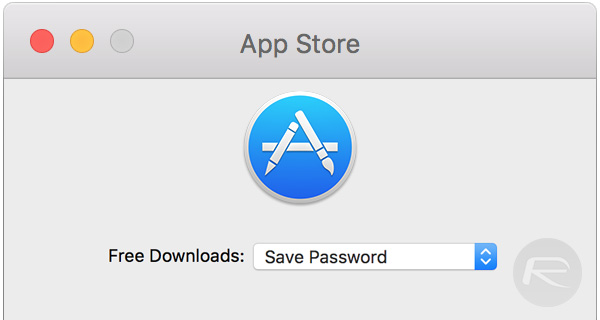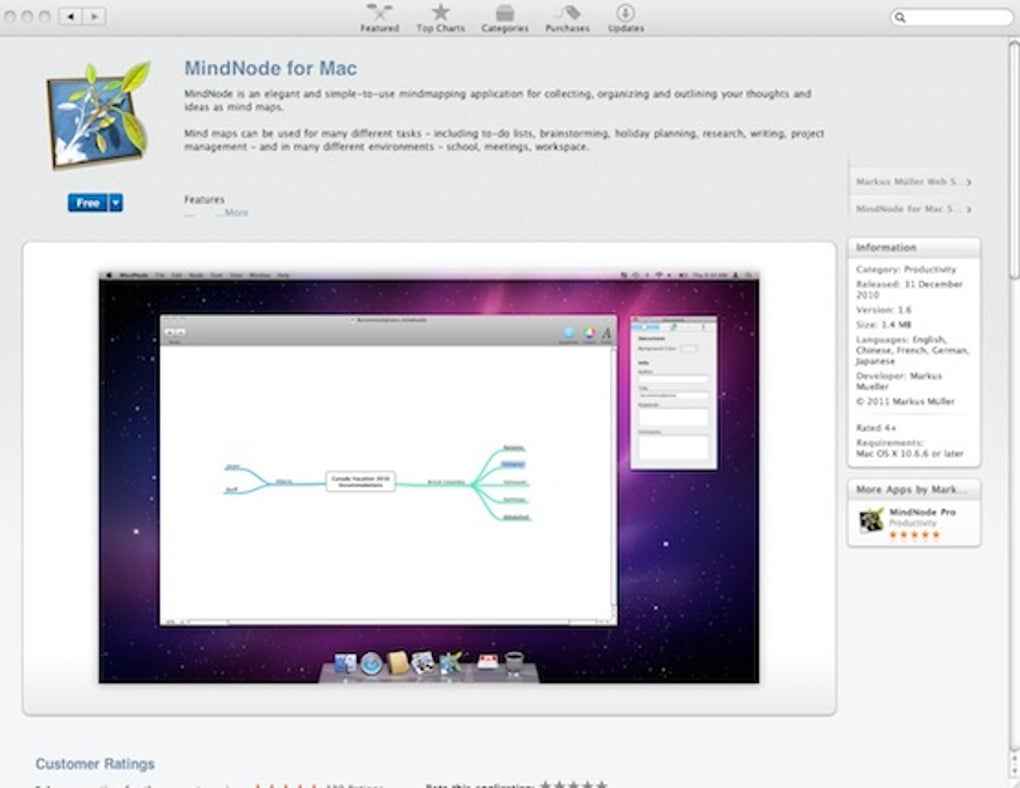Starting with OS X Mountain Lion, Apple introduced Gatekeeper so users couldn’t easily install downloaded apps from outside the Mac App Store.
Change Allow apps downloaded from: to App Store and identified developers. Note: For Mac High Sierra (10.13.x), you will need to click on Allow too. Click the lock icon again to prevent any further changes. Installing the Zoom application. Visit our Download Center. Under Zoom Client for Meetings, click Download. Double click the downloaded file. To download and buy apps from the App Store, you need an Apple ID. Your Apple ID is the account that you use to access Apple services. If you use other Apple services like iCloud, sign in to the App Store with the same Apple ID.
When someone downloads an app from somewhere other than the Mac App Store they will get one of a few warning messages depending on what security settings they’ve set in System Preferences. We’ll show users how to set the security settings in Security & Privacy section of the OS X System Preferences using any version of OS X after Mountain Lion so they can install downloaded apps from outside the Mac App Store.
Why Can’t I Install 3rd-Party Apps By Default?
If you don’t care about why this works, skip to the next section. Here’s why Apple sets OS X to disallow 3rd-party apps by default, for those who like to understand why things work as they do.
Cynics will say that Apple does this because they don’t get a 30% cut from applications bought directly from third-party apps instead of their curated app store. A $10 app nets Apple $3 and the developer gets only $7. The developer gets the entire $10 if the app is sold directly.
Apple says they set things blocking third-party apps because they want to protect users who might install downloaded apps with malware or viruses. They take the 30% cut to cover the cost of hosting the Mac App Store and testing apps to keep malware out of the store. In other words, they want to help protect us from our own mistakes.
Apple offers three setting options in the Security & Privacy Settings in System Preferences. Apple set the default to help protect users from Malware or to lock down computers depending on which explanation you prefer.
Apple created Gatekeeper, a program to protect users from Malware. Developers can get a security certificate from Apple through the Apple Developer program. If a developer distributes their app on the Mac App Store, they have to follow certain guidelines to get approved. These guidelines try to keep malware out of the store. Developers can also add a security certificate to their apps. The certificate is some code inserted into the app code. Users can set their machines to allow third-party apps downloaded from the Internet, but only if they include one of these security certificates.
Find out how to change the settings below so you can install downloaded apps from trusted third-party websites. Don’t install apps from just any site because relaxing security settings could potentially open the door to malware and viruses.

How to Install Apps from Outside the Mac App Store
To install third-party apps, the user must change a setting in the Security & Privacy section of System Preferences, the Settings app in OS X.
Open OS X System Preferences by clicking on the app icon from OS X Dock or by clicking the Apple icon in the Menu Bar in the upper left corner of the screen. When the menu pops up, click on System Preferences.
Click on Security & Privacy from the top row of the System Preferences app. Choose the General tab to see the settings below.
There’s a lock icon at the bottom of the dialog box. Click it to enable all the settings in the box. The OS will ask the user to enter their administrator’s password. Click OK and the grayed out settings become clickable.
The settings we need to work with show up at the bottom half of the dialog box. There are three options under Allow apps downloaded from:. Here are the descriptions taken from Apple’s support site.
- Mac App Store – Only apps that came from the Mac App Store can open.
- Mac App Store and identified developers (default in OS X) – Only allow apps that came from the Mac App Store and developers using Gatekeeper can open.
- Anywhere – Allow applications to run regardless of their source on the Internet (default in OS X Lion v10.7.5); Gatekeeper is effectively turned off. Note: Developer ID-signed apps that have been inappropriately altered will not open, even with this option selected.
If the user chooses the first two options, they can close the dialog box and continue. However, if the user chooses Anywhere, the above warning pops up to scare the user from using this setting. It says:
Choosing “Anywhere” makes your Mac less secure.

The warning box explains that OS X resets this setting after 30 days. Users will have to come back here and do the above steps again. Further, it explains that it’s safer to let the OS warn you each time you launch an app, which includes an option to allow it by clicking an OK button if you select the middle option of the three.
Which Option Should You Choose?
Those who only install apps from the Mac App Store should not bother changing the default settings. Make sure to select the first option labelled Mac App Store and close the box. If you want to install and run any app you want and don’t worry at all about malware, then choose the third option labelled Anywhere. I use the second option since I can still install third-party apps, but they have to come from developers who take the time to add an Apple Developer security certificate to their app. These are safe, but can come from outside the Mac App Store.
Related Posts
While most people can access their email via the web these days, having a dedicated…
We've put together a list of some of the best Mac apps anywhere: if you're looking…
Any time a user installs a new application on a Mac, it becomes the default…
The App Store and Mac App Store showcase your amazing apps and help customers find new favorites. They’re also where our editors share stories about inspiring developers and their incredible work. Find out how customers can discover your apps, and learn how our editors select apps and developers to feature.
Categories
Download Mac Store App
Categories on the App Store and Mac App Store sort apps based on their main function or subject matter. Customers can browse categories, such as Entertainment, Shopping, or Social Networking, to find related apps. You can assign a primary and a secondary category to your app. The primary category is particularly important for discoverability, as it helps users find your app when browsing or filtering search results, and it determines in which tab your app appears on the App Store.
To learn more, see Choosing a Category.
Today Tab
The Today tab on the App Store is a daily destination with original stories from our editors around the world, featuring exclusive premieres, new releases, a fresh look at our all-time favorites, an App of the Day, a Game of the Day, and more. It offers tips and how-to guides to help customers use apps in innovative ways, and showcases interviews with inspiring developers. Stories share Apple’s unique perspective on apps and games and how they impact our lives, using artwork, videos, and developer quotes to bring your apps to life.
Games and Apps Tabs

The App Store is also the world’s best game store, with dedicated experiences for games and apps that inform and engage customers through recommendations on new releases and updates, videos, top charts, and handpicked collections and categories. Both tabs also feature app preview videos that autoplay with muted audio as customers scroll through the tabs, and selected in-app purchases — which customers can start buying directly on the App Store.
Promoted In-App Purchases
Customers can browse in-app purchases directly on the App Store and start a purchase even before downloading your app, helping your app’s content gain exposure. You can promote up to 20 in-app purchases, including subscriptions, on your app’s product page. They can also appear in search results and may be featured by our editorial team.
For details, see Promoting Your In-App Purchases.
Discover
Discover is where customers find the best new releases and updates on the Mac App Store. Each week, our editors shine a light on incredible apps and games with in-depth stories, behind-the-scenes interviews, and curated collections to help customers do more of what they love with their Mac.
Create
Create is where customers find powerful apps that make creating on a Mac intuitive, efficient, and fun, with helpful tips and tours that even experts will find useful.
Work
Work is where we showcase new favorites that support focus and organization. With curated collections and how-tos from our editors, finding the right business, productivity, and utility apps is easy.
App Store Apple
Play
Play is where we highlight great games and entertainment apps, with recommendations of new releases, all-time favorites, and handpicked collections.
Develop
Develop is where our editors curate the best developer tools and utilities to help bring your creativity and imagination to customers around the world.
Getting Featured
App Store editors write stories that showcase apps in interesting and informative ways. Our editors base their decisions on a variety of factors, all of which amount to a great product that customers will love. There is no paid placement or checklist of requirements for apps we write about or feature.
Stories.App Store editors talk about apps that have a unique story for example, a behind-the-scenes look at how a developer launched an app that disrupted an industry or how an app helped a customer solve a unique problem.
Apps and Games. When considering apps to feature, our editors look for high-quality apps across all categories, with a particular focus on new apps and apps with significant updates. Factors that our editors consider include:
Macos App Store
- UI design: the usability, appeal, and overall quality of the app
- User experience: the efficiency and functionality of the app
- Innovation: apps that solve a unique problem for customers
- Localizations: high-quality and relevant
- Accessibility: well-integrated features
- App Store product page: compelling screenshots, app previews, and descriptions
- Uniqueness
Mac Os Download

For games, editors also consider:
- Gameplay and level of engagement
- Graphics and performance
- Audio
- Narrative and story depth
- Ability to replay
- Gameplay controls
Mac Apple Store Download Apps
Tell us your story.
If your app has a unique story that our editorial team should know, tell us about it. For new apps or a significant update, let us know six to eight weeks in advance of your launch.
